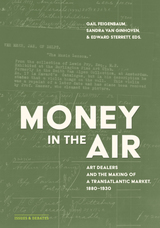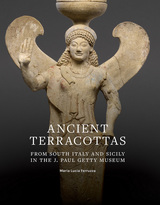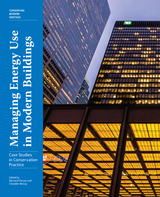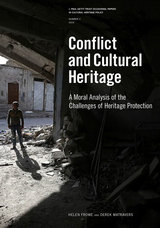115 scholarly books by J. Paul Getty Trust, The and 5
have author last names that start with F
115 scholarly books by J. Paul Getty Trust, The and 5
115 scholarly books by J. Paul Getty Trust, The
5 have author last names that start with F have author last names that start with F
5 have author last names that start with F have author last names that start with F

Money in the Air
Art Dealers and the Making of a Transatlantic Market, 1880–1930
Gail Feigenbaum
J. Paul Getty Trust, The, 2024
This volume explores the crucial role of art dealers in creating a transatlantic art market in the late nineteenth and early twentieth centuries.
“There was money in the air, ever so much money,” wrote Henry James in 1907, reflecting on the American appetite for art acquisitions. Indeed, collectors such as Henry Clay Frick and Andrew W. Mellon are credited with bringing noteworthy European art to the United States, with their collections forming the backbone of major American museums today. But what of the dealers, who possessed the expertise in art and recognized the potential of developing a new market model on both sides of the Atlantic?
Money in the Air investigates the often-overlooked role of these dealers in creating an international art world. Contributors examine the histories of well-known international firms like Duveen Brothers, M. Knoedler & Co., and Goupil & Cie and their relationships with American clients, as well as accounts of other remarkable dealers active in the transatlantic art market. Drawing on dealer archives, scholars reveal compelling findings, including previously unknown partnerships and systems of cooperation. This volume offers new perspectives on the development of art collections that formed the core of American art museums, such as the National Gallery of Art, the Metropolitan Museum of Art, and the Frick Collection.
“There was money in the air, ever so much money,” wrote Henry James in 1907, reflecting on the American appetite for art acquisitions. Indeed, collectors such as Henry Clay Frick and Andrew W. Mellon are credited with bringing noteworthy European art to the United States, with their collections forming the backbone of major American museums today. But what of the dealers, who possessed the expertise in art and recognized the potential of developing a new market model on both sides of the Atlantic?
Money in the Air investigates the often-overlooked role of these dealers in creating an international art world. Contributors examine the histories of well-known international firms like Duveen Brothers, M. Knoedler & Co., and Goupil & Cie and their relationships with American clients, as well as accounts of other remarkable dealers active in the transatlantic art market. Drawing on dealer archives, scholars reveal compelling findings, including previously unknown partnerships and systems of cooperation. This volume offers new perspectives on the development of art collections that formed the core of American art museums, such as the National Gallery of Art, the Metropolitan Museum of Art, and the Frick Collection.
[more]

Ancient Terracottas from South Italy and Sicily in the J. Paul Getty Museum
Maria Lucia Ferruzza
J. Paul Getty Trust, The, 2016
In the ancient world, terracotta sculpture was ubiquitous. Readily available and economical—unlike stone suitable for carving—clay allowed artisans to craft figures of remarkable variety and expressiveness. Terracottas from South Italy and Sicily attest to the prolific coroplastic workshops that supplied sacred and decorative images for sanctuaries, settlements, and cemeteries. Sixty terracottas are investigated here by noted scholar Maria Lucia Ferruzza, comprising a selection of significant types from the Getty’s larger collection—life-size sculptures, statuettes, heads and busts, altars, and decorative appliqués. In addition to the comprehensive catalogue entries, the publication includes a guide to the full collection of over one thousand other figurines and molds from the region by Getty curator of antiquities Claire L. Lyons.
The free online edition of this open-access catalogue, available at www.getty.edu/publications/terracottas/ includes zoomable high-resolution photography and a select number of 360° rotations; the ability to filter the catalogue by location, typology, and date; and an interactive map drawn from the Ancient World Mapping Center and linked to the Getty's Thesaurus of Geographic Names and Pleiades. Also available are free PDF, EPUB, and Kindle/MOBI downloads of the book; CSV and JSON downloads of the object data from the catalogue and the accompanying Guide to the Collection; and JPG and PPT downloads of the main catalogue images.
The free online edition of this open-access catalogue, available at www.getty.edu/publications/terracottas/ includes zoomable high-resolution photography and a select number of 360° rotations; the ability to filter the catalogue by location, typology, and date; and an interactive map drawn from the Ancient World Mapping Center and linked to the Getty's Thesaurus of Geographic Names and Pleiades. Also available are free PDF, EPUB, and Kindle/MOBI downloads of the book; CSV and JSON downloads of the object data from the catalogue and the accompanying Guide to the Collection; and JPG and PPT downloads of the main catalogue images.
[more]

Managing Energy Use in Modern Buildings
Case Studies in Conservation Practice
Bernard Flaman
J. Paul Getty Trust, The, 2021
This timely volume brings together case studies that address the urgent need to manage energy use and improve thermal comfort in modern buildings while preserving their historic significance and character.
This collection of ten case studies addresses the issues surrounding the improvement of energy consumption and thermal comfort in modern buildings built between 1928 and 1969 and offers valuable lessons for other structures facing similar issues. These buildings, international in scope and diverse in type, style, and size, range from the Shulman House, a small residence in Los Angeles, to the TD Bank Tower, a skyscraper complex in Toronto, and from the Calouste Gulbenkian Foundation, a cultural venue in Lisbon, to the Van Nelle Factory in Rotterdam, now an office building. Showing ingenuity and sensitivity, the case studies consider improvements to such systems as heating, cooling, lighting, ventilation, and controls. They provide examples that demonstrate best practices in conservation and show ways to reduce carbon footprints, minimize impacts to historic materials and features, and introduce renewable energy sources, in compliance with energy codes and green-building rating systems.
The Conserving Modern Heritage series, launched in 2019, is written by architects, engineers, conservators, scholars, and allied professionals. The books in this series provide well-vetted case studies that address the challenges of conserving twentieth-century heritage.
This collection of ten case studies addresses the issues surrounding the improvement of energy consumption and thermal comfort in modern buildings built between 1928 and 1969 and offers valuable lessons for other structures facing similar issues. These buildings, international in scope and diverse in type, style, and size, range from the Shulman House, a small residence in Los Angeles, to the TD Bank Tower, a skyscraper complex in Toronto, and from the Calouste Gulbenkian Foundation, a cultural venue in Lisbon, to the Van Nelle Factory in Rotterdam, now an office building. Showing ingenuity and sensitivity, the case studies consider improvements to such systems as heating, cooling, lighting, ventilation, and controls. They provide examples that demonstrate best practices in conservation and show ways to reduce carbon footprints, minimize impacts to historic materials and features, and introduce renewable energy sources, in compliance with energy codes and green-building rating systems.
The Conserving Modern Heritage series, launched in 2019, is written by architects, engineers, conservators, scholars, and allied professionals. The books in this series provide well-vetted case studies that address the challenges of conserving twentieth-century heritage.
[more]

Wall to Wall
Mural Art around the World
Mary Ann Fraser
J. Paul Getty Trust, The, 2024
An exciting tour of remarkable wall art around the globe, from prehistoric caves to futuristic wonders.
People have been drawing on walls since ancient times. They do it to create beauty, to tell a story, to make a statement, or just to say, “I was here.” You can find wall art in a remote cave in Patagonia and a desert castle in Jordan, a kingly palace in the Republic of Benin and the National Palace of Mexico, a miles-long flood channel in Los Angeles and a sky-high rooftop in Norway.
In Wall to Wall, award-winning author, illustrator, and muralist Mary Ann Fraser takes readers on a worldwide journey through time, stopping to see amazing mural art along the way. Stunning color illustrations and fascinating photographs illuminate both famous and little-known examples, and lighthearted text tells engaging stories about the people who inspired or created them. A glossary, selected bibliography, and section about the preservation of murals conclude the book. No reader will ever again pass by a mural—whether in a historic building, a museum, or out on the street—without stopping to take a closer look.
Ages ten to fourteen
People have been drawing on walls since ancient times. They do it to create beauty, to tell a story, to make a statement, or just to say, “I was here.” You can find wall art in a remote cave in Patagonia and a desert castle in Jordan, a kingly palace in the Republic of Benin and the National Palace of Mexico, a miles-long flood channel in Los Angeles and a sky-high rooftop in Norway.
In Wall to Wall, award-winning author, illustrator, and muralist Mary Ann Fraser takes readers on a worldwide journey through time, stopping to see amazing mural art along the way. Stunning color illustrations and fascinating photographs illuminate both famous and little-known examples, and lighthearted text tells engaging stories about the people who inspired or created them. A glossary, selected bibliography, and section about the preservation of murals conclude the book. No reader will ever again pass by a mural—whether in a historic building, a museum, or out on the street—without stopping to take a closer look.
Ages ten to fourteen
[more]

Conflict and Cultural Heritage
A Moral Analysis of the Challenges of Heritage Protection
Helen Frowe
J. Paul Getty Trust, The, 2019
In the third issue of the J. Paul Getty Trust Occasional Papers in Cultural Heritage Policy series, authors Helen Frowe and Derek Matravers pivot from the earlier tone of the series in discussing the appropriate response to attacks on cultural heritage with their paper, “Conflict and Cultural Heritage: A Moral Analysis of the Challenges of Heritage Protection.” While Frowe and Matravers acknowledge the importance of cultural heritage, they assert that we must more carefully consider the complex moral dimensions—the inevitable serious consequences to human beings—before formulating policy to forcefully protect it.
A number of writers and thinkers working on the problem of preserving the world’s most treasured monuments, sites, and objects today cite what Frowe and Matravers call extrinsic and intrinsic justifications for the protection of cultural heritage. These are arguments that maintain that protecting heritage will be a key means to achieve other important goals, like the prevention of genocide, or arguments that heritage deserves to be forcefully protected for its own sake. Frowe and Matravers deconstruct both types of justifications, demonstrating a lack of clear evidence for a causal relationship between the destruction of cultural heritage and atrocities like genocide and arguing that the defense of heritage must not be treated with the same weight or urgency, or according to the same international policies, as the defense of human lives.
By calling for expanded theory and empirical data and the consideration of morality in the crafting of international policy vis-à-vis cultural heritage protection, Frowe and Matravers present a thoughtful critique that enriches this important series and adds to the ongoing dialogue in the field.
A number of writers and thinkers working on the problem of preserving the world’s most treasured monuments, sites, and objects today cite what Frowe and Matravers call extrinsic and intrinsic justifications for the protection of cultural heritage. These are arguments that maintain that protecting heritage will be a key means to achieve other important goals, like the prevention of genocide, or arguments that heritage deserves to be forcefully protected for its own sake. Frowe and Matravers deconstruct both types of justifications, demonstrating a lack of clear evidence for a causal relationship between the destruction of cultural heritage and atrocities like genocide and arguing that the defense of heritage must not be treated with the same weight or urgency, or according to the same international policies, as the defense of human lives.
By calling for expanded theory and empirical data and the consideration of morality in the crafting of international policy vis-à-vis cultural heritage protection, Frowe and Matravers present a thoughtful critique that enriches this important series and adds to the ongoing dialogue in the field.
[more]
READERS
Browse our collection.
PUBLISHERS
See BiblioVault's publisher services.
STUDENT SERVICES
Files for college accessibility offices.
UChicago Accessibility Resources
home | accessibility | search | about | contact us
BiblioVault ® 2001 - 2024
The University of Chicago Press









